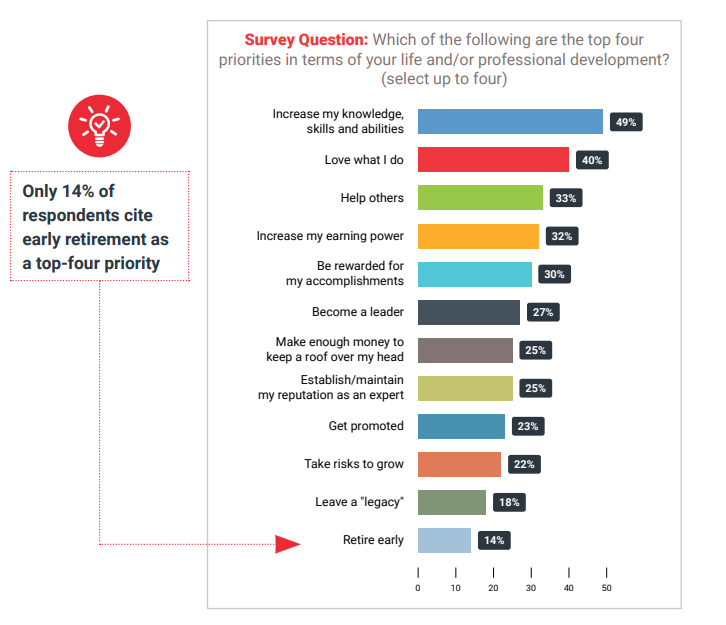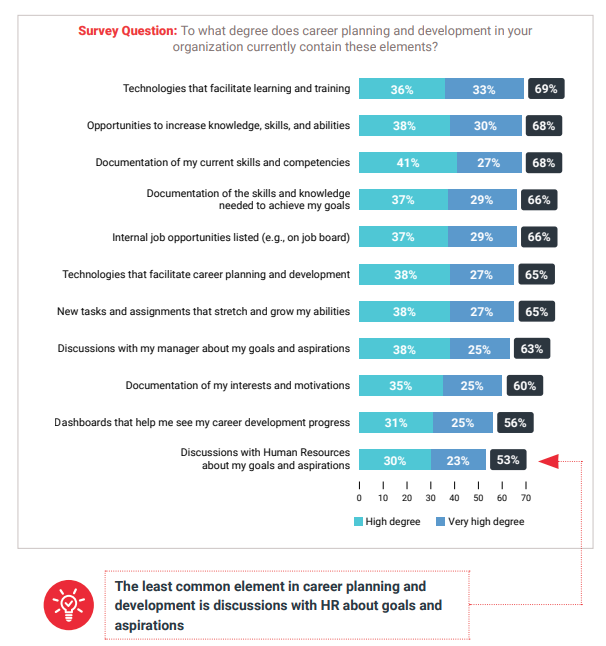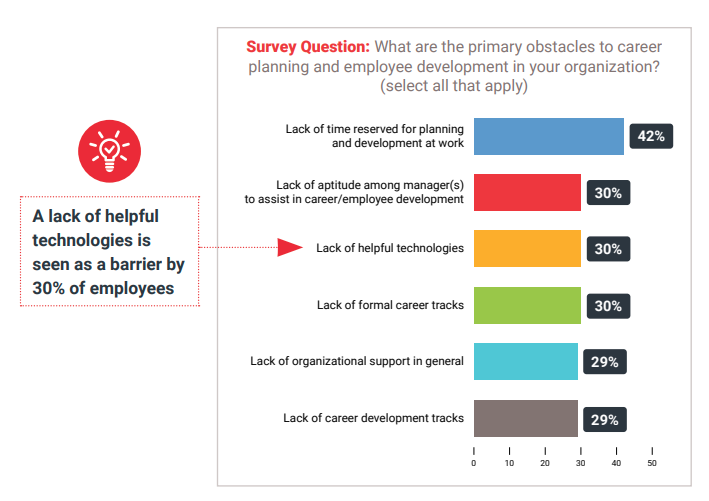In the first two decades of this century, many organizations have struggled to provide high-quality career planning and development for their employees. Some have struggled because they fail to allocate enough time, thought and resources, but those aren’t the only challenges. A less discussed challenge is the very concept of “careers.” After all, not every employee is interested in a career per se. To learn more about these issues, The HR Research Institute partnered with UKG to conduct an extensive survey of employees. We asked them a series of questions to learn more about career, vocational and what we call “life-work” planning. In fact, some of the most interesting findings related to how needs vary among younger and older workers, men and women, and higher and lower wage earners.

Nearly half cite the desire to increase knowledge, skills, and abilities as one of their top priorities, more than any other factor
Employees have different priorities when it comes to life and/or professional development. Even the most commonly cited priority— “increasing knowledge, skills and abilities”—is cited by fewer than half of respondents. Nonetheless, this is by far the most commonly chosen priority, suggesting that employees are well aware that we live in a world where skills are essential to succeed at work. The ability to increase skills and knowledge may be related to the next two most commonly cited items as well: “increase my earning power” and “love what I do.” After all, better skills and abilities are typically associated with increased earning power, and a person is more likely to put effort into raising their skill levels if they already enjoy what they do for a living. We should note that “helping others” is also one of the top four, suggesting that the desire to aid others is a motivation for many employees. However, given that only one of these priorities is cited by even half of respondents, perhaps the main takeaway from this data is that organizations need to personalize the opportunities for employees. Not everyone wants the same thing. Managers need to understand the priorities of each of their direct reports and use that knowledge to drive engagement.

Technologies and opportunities to boost skills and abilities are the most common elements of career planning and development initiatives
As we saw earlier, the most commonly cited employee priority is to the ability to increase skills. Therefore, it makes sense that among the most common elements of a career planning and development initiative is providing opportunities to boost knowledge, skills and abilities (cited by 68%). About the same proportion cite “technologies that facilitate learning and training” and “documentation of my current skills and competencies.” This suggest that these organizations have technologies such as learning management systems (LMS) that can be used to boost skill levels as well as record current skills and competencies. Another key finding is that employees are considerably more likely to have discussions about goals and aspirations with their direct managers than with HR professionals. Therefore, employers will likely benefit by training direct managers in how to most productively have these conversations and provide guidance.

The primary obstacle to career planning is the lack of time to devote to it at work
The most commonly cited barrier to career planning is the lack of reserved time to do so at work. Fortunately, this affects a minority of employees 42%. The implication for HR is to check if employees feel this is a constraint for them. If so, then HR might be able to work with managers to set aside some time for it. Of course, this raises the issue of whether career planning is the responsibility of the individual or the organization. We believe it is a shared responsibility. The second most commonly cited barrier was lack of aptitude in the managers assisting with career planning (30%). Hence, managers may need training in many organizations. HR can start by identifying managers who are struggling in this area. Otherwise, employees need someone else they can go to for career planning and employee development. Another point worth mentioning is that most obstacles are all cited by just 29% or 30% of employees. The takeaway is that HR may need to address several obstacles, not just the top one or two.
